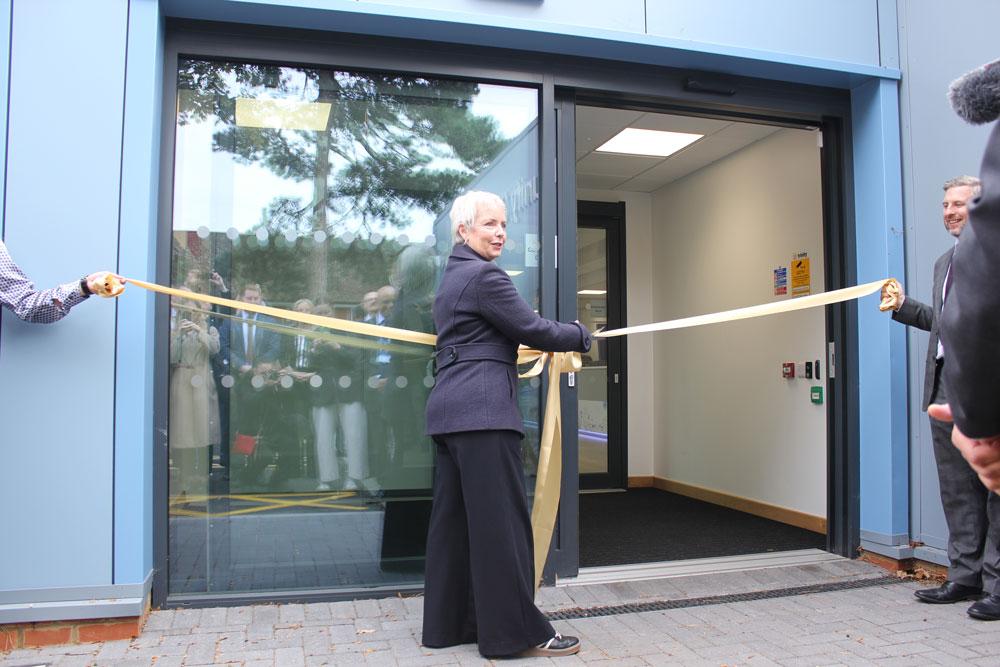How do manufacturers and installers of volumetric offsite construction ensure sustainability and compliance when the key priority is time? Jackie Maginnis CEO of the Modular and Portable Building Association shows how the industry has been leading the way longer than you think
Volumetric or modular has been supplying education, health and commercial businesses with their much need facilities successfully without many end users realising that they are in this type of building, thus showing the standards and quality that are produced today for many years. Not only do suppliers provide permanent buildings they also supply much needed temporary facilities at a far greater speed than traditional construction with a quality to match.
Offsite construction has become a hot topic in the last few years, and sustainability has been the buzzword of the decade (other than fake news of course) but there is still an element of ‘catch all’ with both words. Offsite means simply, built in the factory and transported to the final destination site where it will be assembled for final occupation. Built, and in most cases, fit out is completed in the factory where a high standard of quality can be achieved.
Manufacturers drive quality in the product through ISO9001 accreditation and BBA approvals, and its due to these high standards that when it comes to thermal bridging and air permeability tests show that on average a factory built modular/volumetric buildings achieves better than traditional construction, good reason for hospitals to be built in this way. There are many examples of where exemplar quality increases carbon performance, leading to a more sustainable building ticking all the boxes for the future.
Leading sustainably
That brings us nicely to sustainability, where volumetric construction has long since lead the charge. Back in 2006 as an association we introduced communities and local government to the embodied energy, particularly within the hire and refurbishment markets. When a modular building is constructed as an alternative to traditional methods to be a permanent building it is built to the same standards required for all construction, and with the added benefit that the as built performance will match the as designed performance. The speed of manufacture and construction is so impressive it can even keep up with the demands of the modern designs and requirements of end users today.
It is important that procurement departments/buyers to realise that modular buildings have the potential to be more cost-effective than conventionally built projects. because the structures are made to the highest standards off-site, modular buildings can and are frequently installed causing minimal disruption to staff and the existing patients. Still today there is a reluctance to not to make the industry sector the first port of call. In doing this it eliminates an expensive part of a project by not going through a third party.
Modular building companies specialise in providing a ‘complete service’ to hospitals and a variety of medical facilities from undertaking the initial design and carrying out all necessary groundwork to construction and final fit out.
Standalone structures, single-storey ‘cluster’ departments, two-storey schemes or whole hospital configurations to name but a few of what can be provided by the industry. In addition to being fitted-out for, wards, theatres, general offices, kitchen and dining purposes, the expertise also exists to design, create and subsequently install more ‘specialist’ accommodation required by the clients.
By placing a contract with a volumetric/modular building company they know that the date they are given for occupation is the date that they can use the building to admit patients.
Modular buildings are built in controlled, energy-efficient environments. From initial works to completion, it takes up to 67 per cent less energy to produce a modular building compared with a traditionally-built project. Whilst initial, onsite ground works are being completed; modules – which make up a modular building – are manufactured offsite, in a controlled, factory environment.
Pre-fitted with electrics, plumbing, heating, doors, windows and internal finishes before they are taken to site, modular buildings can also be installed with energy-efficient systems such as PIR sensors, enhanced ‘U’ values and solar panels. Not only is the offsite manufacture greener, buildings are also designed to be energy-efficient for their entire life cycle, all within the NHS requirements.
Off-site construction
Modular buildings now come with a range of external options to cater for nearly every look, including brickwork and tiled roofs to give a traditional appearance if that’s what’s required.
When you build offsite, you plan and construct with meticulous precision.
It takes strategic thinking and rigorous co-ordination, but modular construction allows for minimal disruption to staff and patients which is particularly key in the acute care environment. Offsite construction also allows for a 90 per cent reduction of the total number of deliveries to site as well as reducing up to 90 per cent of waste generated as the structure is recyclable.
Companies have been providing volumetric buildings for hospital facilities for many years and there are many examples of existing hospital today built by the industry and fully compliant with NHS requirements, as an association we would suggest that if there is any doubt to look at what is already out there.
There are now volumetric/modular frameworks in place for the Health sector which enables facilities to be supplied by companies that have been vetted and meet the requirements – using this will give buyers confidence in the knowledge that these companies can supply their needs.





